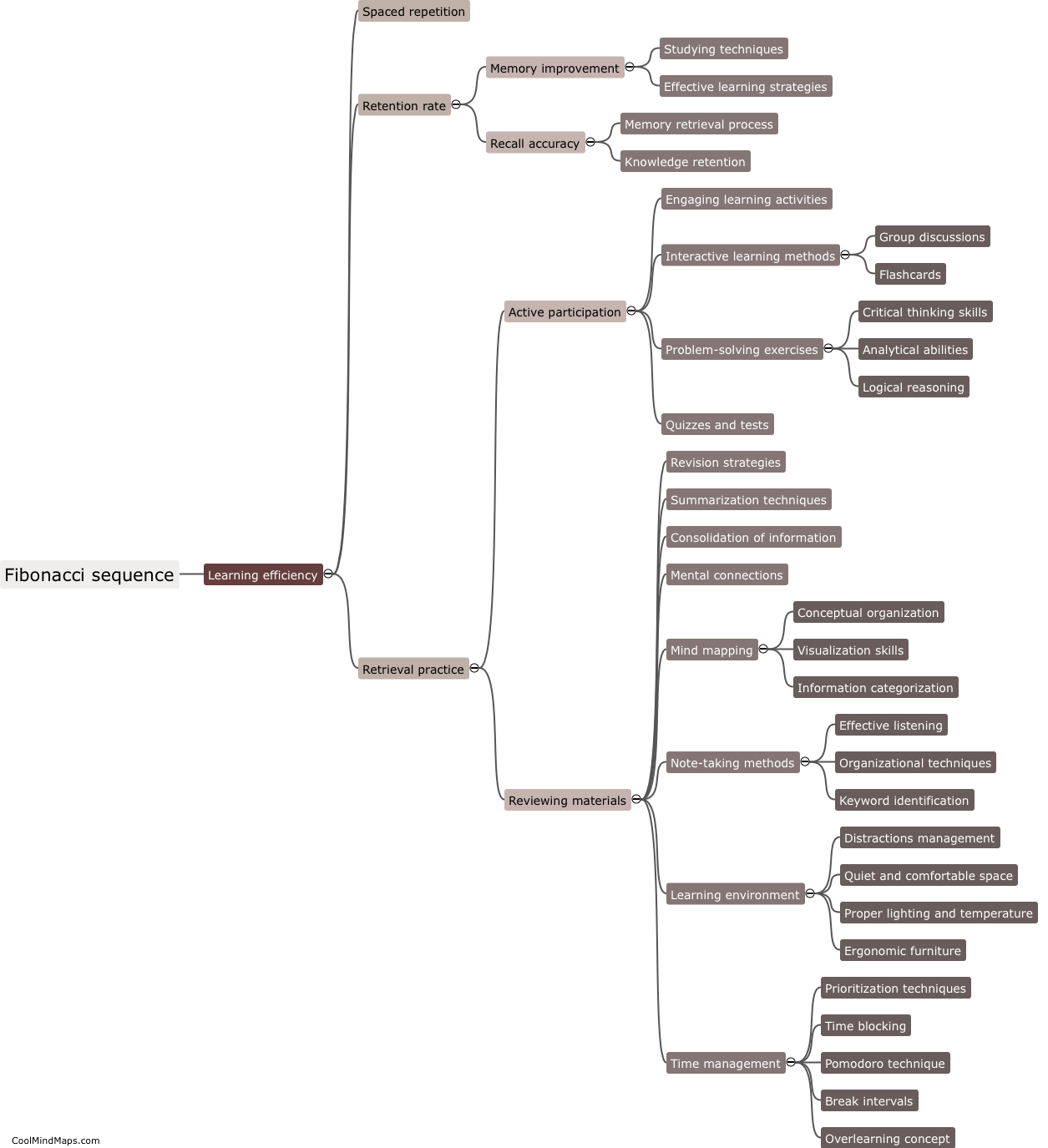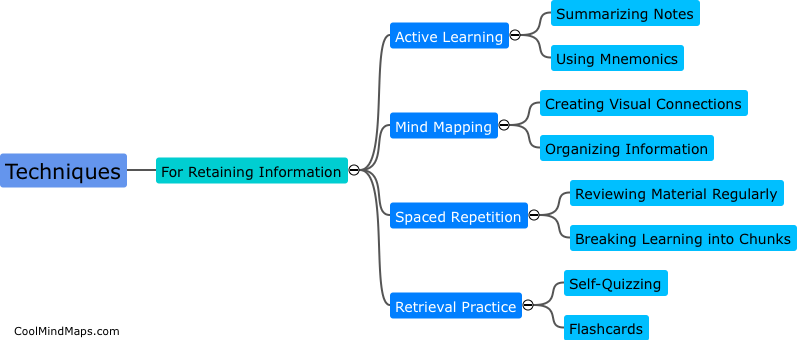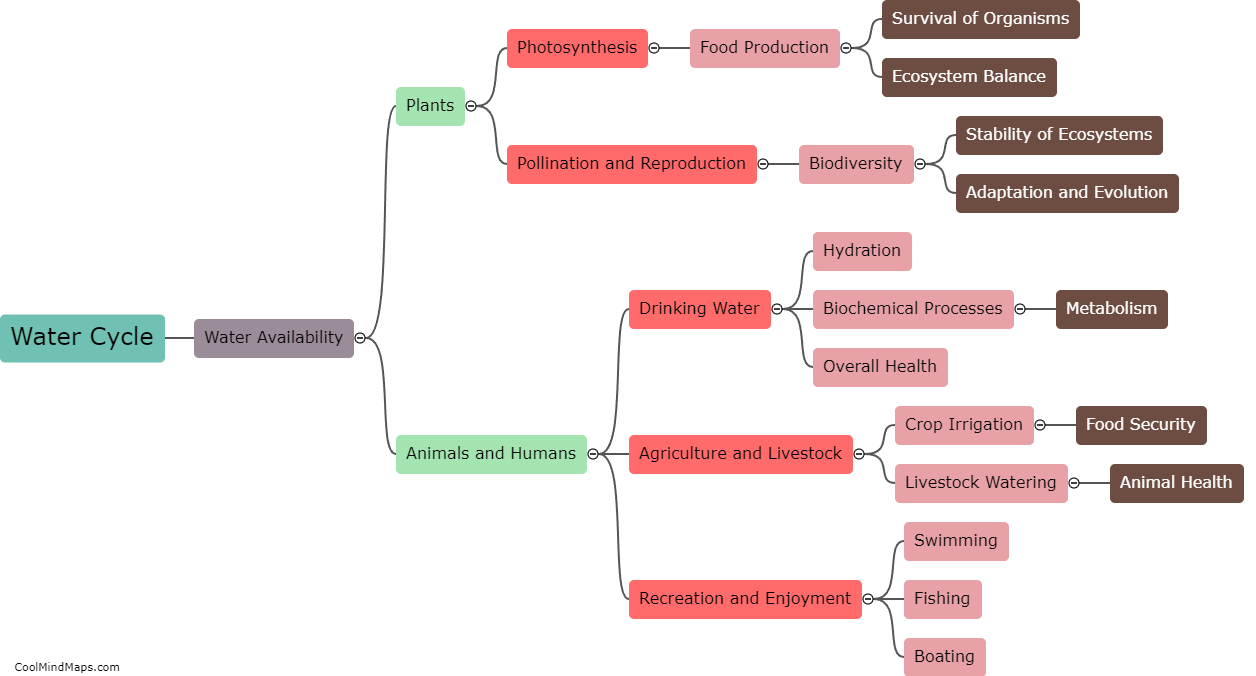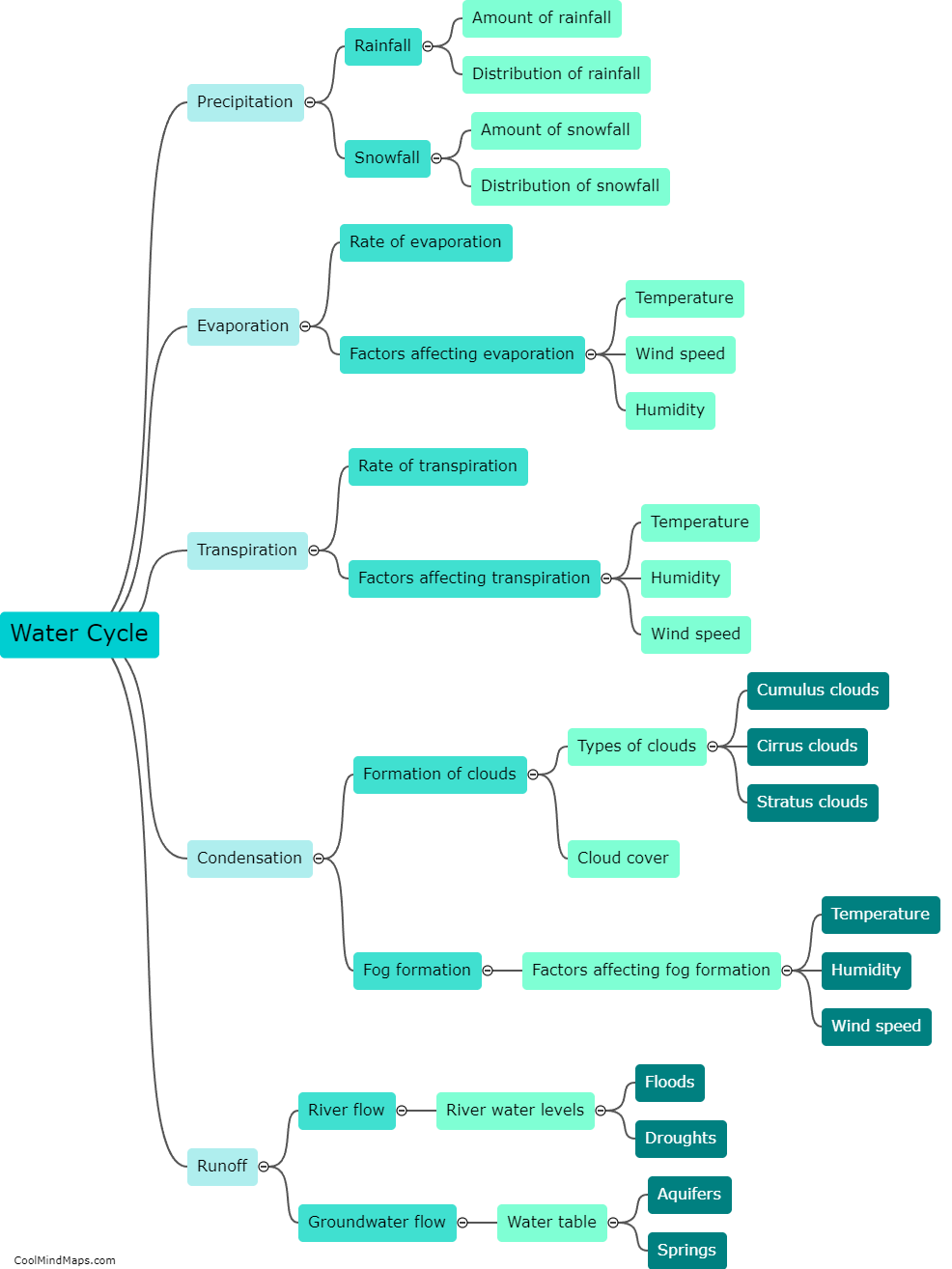Can the Fibonacci sequence improve learning efficiency in spaced repetition?
The Fibonacci sequence, a series of numbers in which each number is the sum of the two preceding ones, has been frequently observed in nature and mathematics. Recently, researchers have examined its potential to improve learning efficiency in spaced repetition. Spaced repetition is a learning technique that involves reviewing information at increasing intervals over time. By following the Fibonacci sequence for the duration between repetitions, it is theorized that learners can optimize their study schedules. The rationale behind this is that the increasing intervals reflect the brain's natural learning and forgetting process, ensuring that information is refreshed at the right intervals to enhance long-term retention. Although the effectiveness of this approach is still being explored, it offers an intriguing avenue to explore in the quest for improved learning strategies.

This mind map was published on 23 November 2023 and has been viewed 157 times.











